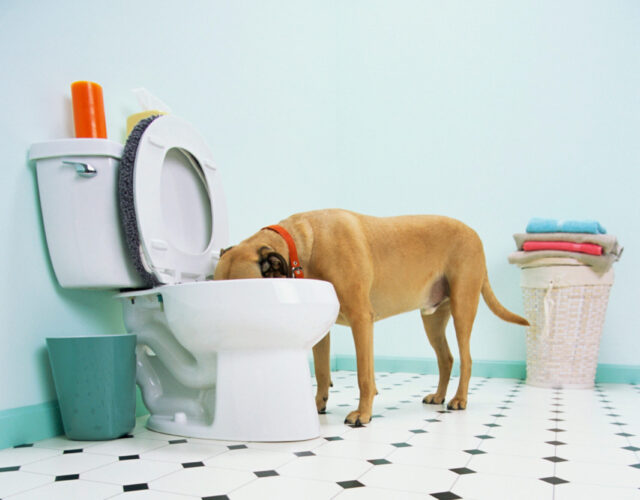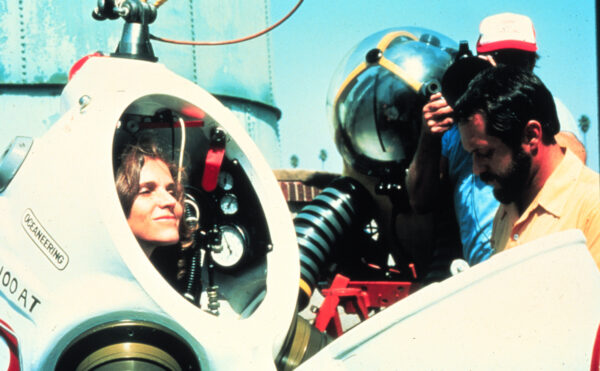Who’s against recycling? More people than you probably think—provided we’re talking about recycling water. Recycling water involves treating wastewater (shower water, laundry water, toilet water) to make it potable. The very idea makes most people squirm at first—opponents call the process “toilet to tap”—but droughts and overpopulation may bring this once extreme idea to the mainstream around the world.
The technology used to recycle water is actually simple. First, a treatment plant runs the water through long, thin, hollow tubes—they look like toothbrush bristles close up—to filter out debris larger than 0.2 microns across. Next, the water flows through even smaller filters—300 times smaller than human hairs—that remove microbes, drugs, minerals, pesticides, and dyes. Finally, the water gets mixed with hydrogen peroxide and exposed to ultraviolet light, which activates the peroxide and allows it to gobble up any lingering impurities.
Several places around the world already use this three-step process to recycle waste-water, including Singapore and Windhoek, Namibia, both of which produce over one-quarter of their water this way. And several U.S. cities and counties use it to produce irrigation water for farms and golf courses but not for drinking. Other locales pump recycled wastewater into aquifers to top them off.
But a few American cities, like Wichita Falls, Texas, and Cloudcroft, New Mexico, have now started pumping recycled water directly into people’s homes. And it’s this step that has proved controversial—even though it shouldn’t be from a public-health perspective. Recycled wastewater is purer than any tap water available; it’s also far purer than bottled water. What’s more, natural water supplies in the United States aren’t in the best shape: droughts already afflict large swaths of the country. Many natural water supplies are contaminated by animal feces, heavy metals, and other impurities, making 19 million Americans sick every year. And most Americans already drink water recycled in a different fashion: by the time water in the Mississippi River reaches New Orleans, for example, scientists estimate that five different animals have swallowed each molecule and urinated it out.
There’s no reason to scorn recycled water for its taste either. Because it’s so pure—the filtration step removes most dissolved salts—it basically has no taste. Indeed, a few brave breweries in Oregon have announced plans to make beer with recycled sewage for this very reason: brewmasters see this water as a blank slate on which they can craft beer to taste any way they desire.
Still, the idea of drinking treated waste-water gives many people the willies: 13% of all people say they would categorically refuse to even sip recycled water, even when they understand all the economic and environmental benefits. Studies on the psychology of disgust help explain why. Human beings seem to believe implicitly that certain things, either by their nature or their proximity to other things, can get tainted beyond redemption. Studies have shown that most people will refuse to drink fresh apple juice from a bedpan, even if the bedpan has never been used. Nor will they eat chocolate in the shape of poop. Wastewater seems to tap into this same sense of disgust: once it’s touched your toilet, it’s never clean. Even spiffy new technology doesn’t help. When Bill Gates recently demonstrated a device to purify wastewater in just five minutes, some observers complained that the process happened too quickly: they wanted more psychological “distance” between toilet and tap.
Depending on where they live, however, such people soon might not have a choice. In 2014 San Diego approved a $2.9-billion plan to expand its current sewage-treatment plants to begin recycling wastewater and pump it into people’s homes, by far the largest American city to take such a step. San Diego currently imports 90% of its water from distant sources; but those sources are running dry, and desalination plants (which remove salt from seawater) cost far more than recycling. The San Diego commitment is especially notable because voters rejected essentially the same plan in 1998. But 20 years from now the city will be producing 83 million gallons of recycled water per day, a third of its projected need.
Most cities that are considering recycled water today face either severe droughts, overpopulation, or both. But the rest of the world may not be far behind. Only 3% of all water on Earth is freshwater, and one in eight people alive today—900 million people overall—don’t have access to safe drinking water. Many of us might find the thought of drinking recycled wastewater disgusting. But like diamonds and gold, disgust may become a luxury item over the next century, available only to those who can afford it.




